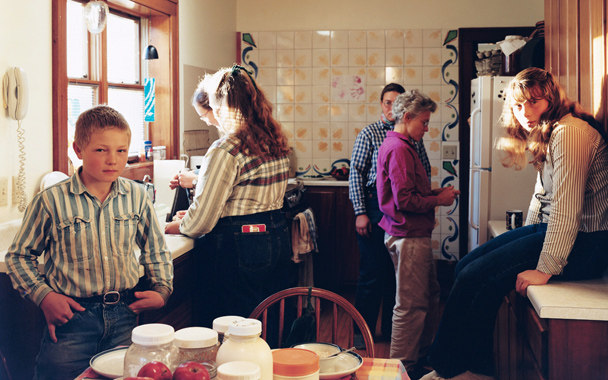Late last autumn, Tom Harkin (D-Iowa), chair of the Senate Agriculture Committee, was furious. After a year of hearings, staff work, and backroom bargaining, he had finally pushed a bipartisan Farm Bill out of committee. But before a single word had been spoken in debate on the Senate floor, President Bush had labeled the $286 billion proposal a budget buster and threatened a veto.
Farm law has its roots in the New Deal efforts of the 1930s to control overproduction of agricultural commodities, and it has been revised, reworded, and reauthorized every five years since then. Both the House proposal and the Senate version run more than 1,000 pages. The language is impenetrable. It is traditionally hammered out by an informal bipartisan alliance of farm-state politicians and agribusiness groups as if the food we eat and the way it is grown is their private preserve. In recent years, public-health experts, conservationists, chefs, healthy-food advocates, and family farmers have tried to insert themselves into the debate, but their voices are almost completely drowned out by those of industrial agriculture. As this year’s bill lumbered through negotiations, one frustrated congressional staffer observed that it would once again be “a patchwork of parochial programs lacking a vision.”
Harkin’s compromises weren’t perfect. He was the first to admit that. He had not successfully reduced commodity payments to rich farmers. Southern rice and cotton representatives blocked him. He had not gotten as much as he wanted for new conservation programs. Few farm-bloc legislators made the connection between farm policy and the obesity epidemic. But he had accomplished small victories: more money for organic research and conversion, a new program to put fresh fruits and vegetables in schools, incentives for school lunch programs to purchase food from local farmers, more money to support farmers markets. All that remained was to steer the Senate bill through the Conference Committee with the House. A veto threat was the last thing Harkin needed. Democrats started talking about tabling the whole mess. “Wait until after the election,” they whispered.
Meanwhile, on a sprawling farm in Walworth County, South Dakota, Matthew Stiegelmeier watched the debate in Washington with disinterested disdain. He was spending his late-autumn afternoons replacing nails on the barn roof. With his sisters Rachel, Martha, and Abby, and his young brother, Ben, he balanced precariously on the slick steel slope, prying out old nails and drilling in new ones—painstaking, monotonous work. But when the snow piled up last winter, the roof leaked. Amid the chatter of pry-bars and hammers and drills, I wondered out loud, “Can’t you tell your mom you’ve got schoolwork to do?” Rachel looked down at me scornfully. “This is school.”
Emily Stiegelmeier is matter-of-fact about her children’s chores. “The harvest is in. There will be too much work in the spring to do it then.” Matthew’s perspective is more poetic. “We have to fix fences before we fish.” All his life, Matthew has hunted deer in the fall, and the freezer has always been stocked with venison. But since his father died a few years ago in a farm accident, Matthew’s responsibilities have increased and hunting has fallen by the wayside. He is only 25, but his day-to-day obligations on the farm have become all-consuming.
Walworth County is on the edge of American agriculture. A hundred and eighty miles east, where House Agriculture Committee chairman Collin Peterson presides over Minnesota’s Seventh Congressional District, the corn grows seven feet tall every year. To the west, the county runs headlong into the Missouri River, and, west of the Missouri, arid grasslands roll 500 rain-starved miles to the Rocky Mountains.
This is not a land of manicured apple orchards. There are no roadside pumpkin stands garnished with Indian corn. Gardening is a fleeting, late-summer indulgence. There are no fancy restaurants. No 4-H Club. No chapter of Future Farmers of America. Few people. Since the 1930s, politicians have claimed that a core precept of federal farm policy is to support the survival and economic development of small rural communities, but the population of Walworth County has declined steadily since the Great Depression and now stands at just under 6,000. In 1920, there were 653 farms. In 2008, there are 322.




 Pinterest
Pinterest






